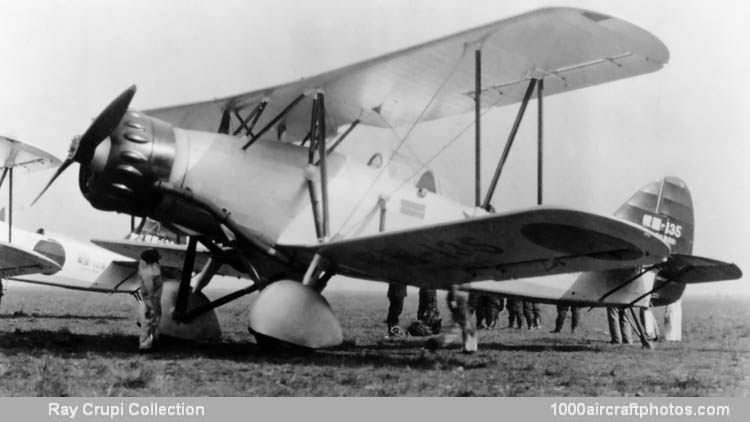In 1934 the Navy had an urgent need for a new type of carrier-borne attack bomber since the Navy Type 92 Carrier Attack Bomber (Yokosuka B3Y1) had been found to be quite unreliable. To meet this requirement the Naval Staff issued a 9-Shi specification and design proposals were submitted by Mitsubishi, Nakajima and the Dai-Ichi Kaigun Koku Gijitsusho (First Naval Air Technical Arsenal) at Yokosuka near Tokyo.
The Yokosuka's project was the work of Sanae Kawasaki, who endeavored to design an aircraft capable of receiving various types of power plants and making use of existing components. To realize his goal Sanae Kawasaki matched a new fuselage and tail section to the wings of the Kawanishi E7Kl which had been found highly efficient.
The first B4Y1 prototype of this hybrid, powered by a 750 hp Hiro Type 91 twelve-cylinder liquid-cooled engine, was completed and flown in late 1935. During 1936 four additional prototypes were built, the second and third prototypes being powered by the 640 hp Nakajima Kotobuki 3 nine-cylinder air-cooled radial, and the fourth and fifth prototypes receiving the 840 hp Nakajima Hikari 2 nine-cylinder air-cooled radial, and these were tested against the Mitsubishi Ka-12 and the Nakajima B4N1.
At the conclusion of these tests, the Hikari 2 powered B4Y1 was found to be superior to the Ka-12 and the B4N1, and in November 1936 production orders for 200 B4Y1 Navy Type 96 Carrier Attack Bombers were placed with Mitsubishi (135), Nakajima (37) and the Dai-Juichi Kaigun Kokusho (Eleventh Naval Air Arsenal) (28).
These production aircraft were of all-metal construction, with light alloy and fabric covering, and seated the pilot in an open cockpit, while the navigator and radio operator/gunner had a canopy-covered cockpit. Armament consisted of a single flexible rear-firing 0.303 in (7.7 mm) Type 92 machine gun, and one 1,764 lb (800 kg) torpedo, or 1,102 lb (500 kg) of bombs carried on external stores. The pictured aircraft has an additional interplane strut at the center section/outer plane joints.
The aircraft were operated aboard Japanese carriers Akagi, Hosho, Kaga, Ryujo and Soryu, and by the 13th and 15th Kokutais until 1940, seeing combat action during the second Sino-Japanese war. During the Pacific War (coded "Jean" by the Allies), the few B4Y1s still airworthy were operated in a training capacity."
Span: 49 ft 2.6 in (15.00 m)
Length: 33 ft 3.6 in (10.15 m)
Height: 14 ft 3.7 in (4.36 m)
Wing area: 138.20 sq.ft (50 sq.m)
Weight empty: 4,409 lb (2,000 kg)
Loaded weight: 7,937 lb (3,600 kg)
Max speed: 173 mph (278 kmh)
Climb: to 9,843 ft (3,000 m) 14 min
Service ceiling: 19,685 ft (6,000 m)
Range: 978 mls (1,574 km)
